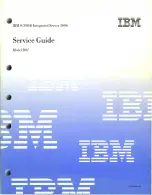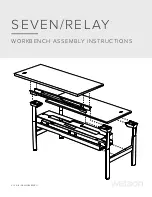
5
2
Safety Instructions
2.1
Proper intended use
The storage container is used for storing lithium-ion and lithium-metal cells and batteries. The
storage container shall be used only in an undamaged and unmodified condition. The integrity
of the storage container shall be checked before each use.
2.2
Hazard potential of lithium ion cells and batteries
With today's manufacturing standards, it can be assumed that lithium-ion cells and batteries,
when properly used and handled, are safe. However, damage can lead to an irreversible, de-
structive reaction, a so-called thermal runaway. Such damage could be, for example:
•
mechanical damage
•
heat stress
•
overcharging
•
outer short circuit
•
total discharge
•
ageing (dendrite formation)
Such damage can cause the cell to heat up, resulting in a decomposition reaction of cell com-
ponents. This decomposition reaction in turn leads to further heating, which then causes the
decomposition process to accelerate in an uncontrolled manner. In combination with the high
temperatures of the cell, the large quantities of toxic and flammable gases formed can lead to
severe fire events. This intense release of heat can consequently cause thermal runaway in the
adjacent cells, so that under certain circumstances the entire battery reacts.
The escaping gases include carbon monoxide (CO), hydrogen (H
2
), carbon dioxide (CO
2
) and
oxygen (O
2
). It is also possible that hydrogen fluoride (HF) escapes, which can react with the
air humidity to form hydrofluoric acid. If the escaping reaction gas does not ignite, it can mix
with the air oxygen to form an explosive atmosphere.
Due to the high hazard potential ensuing from damage that may not always be visible from the
outside, we recommend that batteries with unknown condition should always be stored in
corresponding safety containers.
2.3
Information about PyroBubbles®
PyroBubbles®
are multi-cellular hollow glass spheres, which are not hazardous in their solid
form (delivery condition). Continuous contact with high concentrations of respirable dust can
impair lung functioning. The general dust limits of 1.25 mg/m
3
for respirable (A dust) and 10
mg/m
3
for inhalable (I dust) fractions must be observed. An individual time-weighted average
must not exceed the value of 3 mg/m
3
for the A-dust fraction.






























